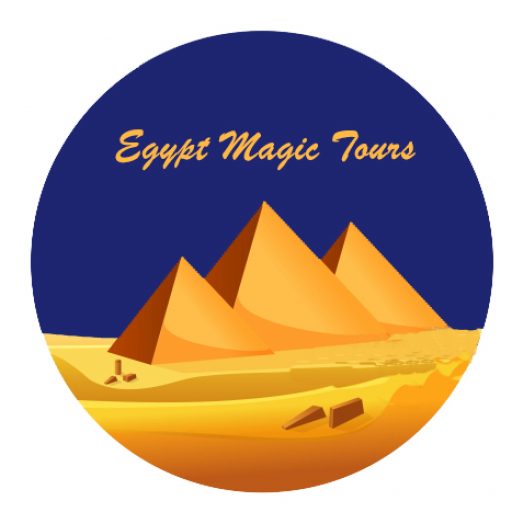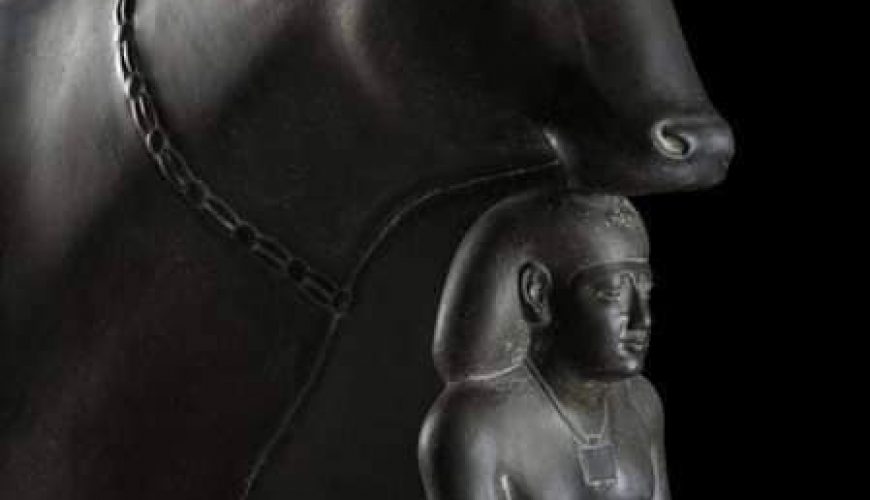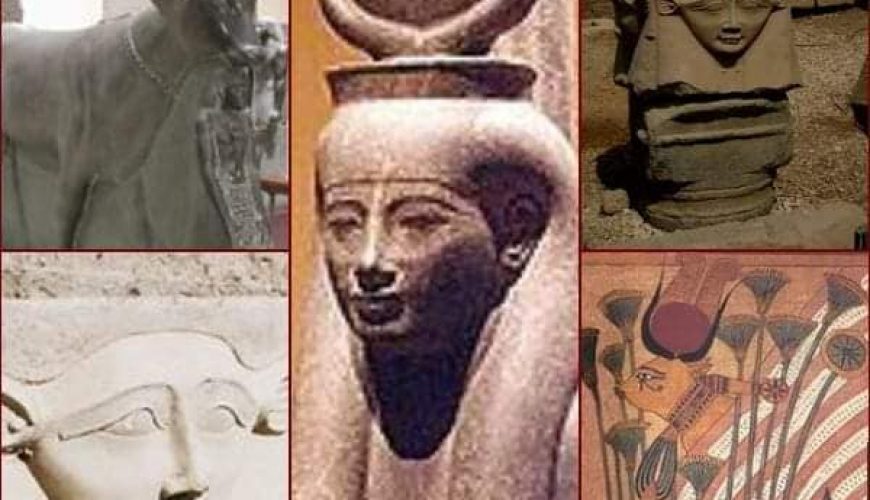Egypt Magic [1472]
Hathor
Hathor is one of the most famous ancient Egyptian deities, the goddess Hathor was one of the most important and famous Egyptian deities, and even one of the most widespread of them ever, and some believe that her worship appeared since prehistoric times, while others see that it appeared since the beginning of the ancient state, on the basis that Evidence dating back to prehistoric and early dynastic times is uncertain of Hathor’s lineage, as some of this evidence has been shown to represent the deity “Pat” and not Hathor.
The goddess Hathor appeared in different images and characteristics, worshipped in many places in all of Egypt, and was known as a goddess of music, love, giving and motherhood. She merged with the goddess Isis and was compared in Greece and the Romans with the goddess “Aphrodite” “Venus.”
The name of Hathor has been known almost since the ancient era, through the names and titles of the priests, which appeared on the seals’ inscriptions from this period through the title “Priest of Hathor” in all places of worship.
The first roots of the goddess Hathor go back to the worship and reverence of the wild cow from before and the beginning of the dynasties, which was sanctified at that time as the embodiment of nature and fertility. Sakht Hur “I present a depiction of Hathor in the form of a cow.
The goddess Hathor enjoyed one of the widest and richest ancient Egyptian rituals, and its religious and ritual tools and symbols were characterized by plurality and wide fame, as they were the most important religious symbols at all, and these tools and symbols took different forms and characteristics, each of which was linked to a specific idea and origin, or roles Ritualistic and religious shameful, “Pinch” added in his study, that the shape of many of these tools and symbols was strongly influenced by the form of the deity “Bat”, and that these symbols were sometimes used interchangeably as symbols of the goddess Hathor, even if each had a special function, and researchers agreed that Symbols of Hathor have taken their form or taken from the shape of the goddess Bat
★ Hathor mask: It is a flat face with the ears of a cow, and it is covered with a wig or without a wig, and it differs from the shape of the goddess Hathor in the complete human body of the head and is characterized by the front and ears of the cow instead of the human ear
Alslasel: It is one of the most important ritual instruments of the goddess Hathor, and it is used in rituals and religious rituals. It is a musical instrument in origin, a plate with strings or cross wires that give a sound when shaken. Hathor plays the Alslasel “the sheikh” and is considered the oldest depiction of Hathor holding. With a prayer in her hands, he is located on the northern wall of the shrine of the temple of Dendara from the era of King Mentuhotep, the neb of the love of Ra. The scene depicts Hathor in the form of a lady of Ptah, holding the salsal and manna in her hands and heading towards the king sitting in front of her …….
Hathor was known in many forms of worship as the great goddess of heaven, a goddess of love, dance and drink, a goddess of the dead, a custodian of royalty, and a lady of foreign countries. She was considered an idol of a global nature, and therefore her relationship was saturated and varied with many deities; she was associated with the sky and the heavenly populace. She was described as the Lady of Heaven and the Lady of the Stars, as the daughter of the goddess Ra. It was accompanied by both Iza and Ozer, all other deities in the form of a cow, and other relationships that cannot be limited.
As for the rituals and religious rituals that were established for it, it was most likely established since the Fourth Dynasty, and there are evidence of the presence of male and female priests in many places of worship since the Fourth Dynasty at least, and its connection to motherhood and then to the deity Ra, and the monarchy as the mother of the god Horus the king, since That the sun’s doctrine became a great affair, formed in relation to the royal rituals and beliefs, and accordingly its worship expanded to include all of Egypt, and the multiplicity of its images and places of worship, made it difficult to determine the main center of its worship, although the most important of these centers during the ancient Egyptian state and perhaps the oldest is Dandara , The capital of the sixth region of Upper Egypt, through which her worship moved to the neighboring seventh region, the seat of the cult of the goddess, and her worship expanded and spread during the historical ages and up to the Greek and Roman eras.



Comment (0)